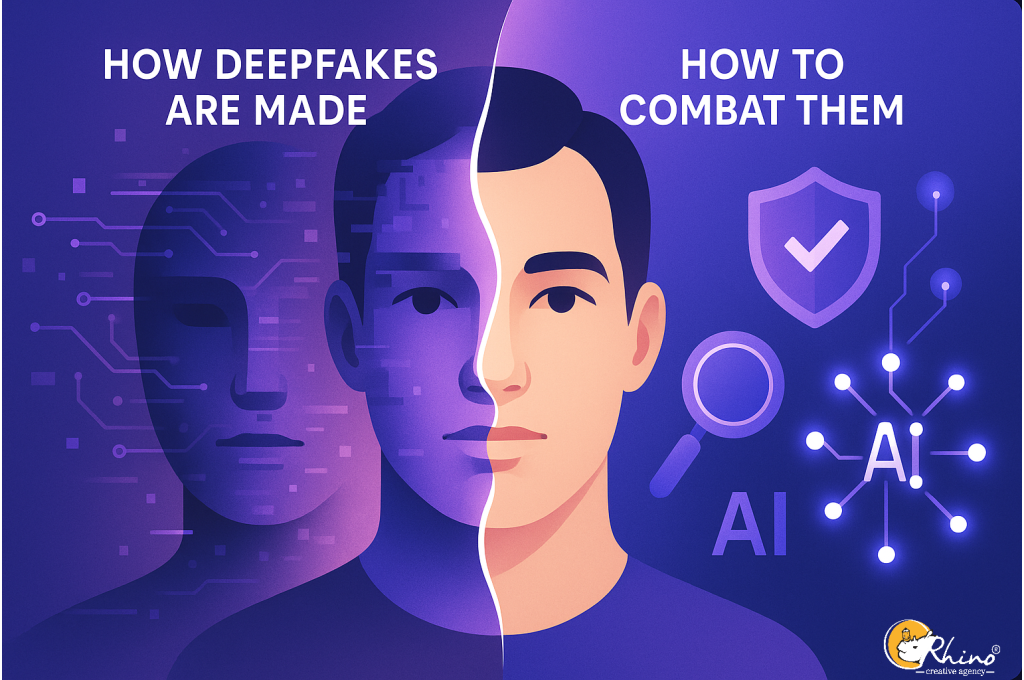Introduction
In recent years, deepfakes have emerged as one of the most concerning technological advancements in the field of artificial intelligence (AI). The term deepfake comes from a combination of “deep learning” and “fake,” referring to the use of advanced AI techniques to manipulate or generate audio, video, or images that appear authentic. While deepfakes can be used creatively in entertainment and education, they also pose significant threats to privacy, security, and trust in digital media. Understanding how they are made and how to combat them is crucial for navigating today’s information environment.
How Deepfakes Are Made
Deepfakes are primarily created using deep learning, a branch of AI that mimics the way human brains process information. The core technology involves Generative Adversarial Networks (GANs), which consist of two competing neural networks:
- The Generator – creates fake content by imitating real data patterns.
- The Discriminator – attempts to detect whether the content is real or fake.
Through repeated cycles, the generator improves until the discriminator can no longer reliably distinguish between authentic and synthetic content.
Key techniques used in deepfake creation include:
- Face-swapping: Replacing one person’s face in a video with another’s.
- Lip-syncing: Matching a person’s mouth movements to fabricated or altered audio.
- Voice synthesis: Using AI models to mimic someone’s speech patterns and tone.
- Full-body synthesis: Generating entire personas that never existed, sometimes known as “AI avatars.”
The accessibility of open-source AI tools and powerful computing hardware has made deepfake production easier than ever, lowering barriers for both legitimate creators and malicious actors.
Risks and Implications
The rapid spread of deepfakes presents multiple risks:
- Misinformation and Propaganda: Fake videos can be used to influence political discourse or spread false narratives.
- Reputation Damage: Individuals may be targeted with fabricated content that harms their personal or professional image.
- Fraud and Security Threats: Synthetic voices and faces can be used to bypass biometric systems or conduct financial scams.
- Erosion of Trust: As deepfakes become more convincing, people may lose confidence in digital evidence, creating what some call the “liar’s dividend”—the ability to dismiss real content as fake.
How to Combat Deepfakes
Addressing the deepfake challenge requires a multi-layered approach combining technology, law, education, and ethics.
- Technological Solutions
- Detection Tools: AI-based systems are being developed to analyze inconsistencies in lighting, facial movements, or pixel patterns to detect fakes.
- Watermarking and Metadata Tracking: Embedding invisible watermarks or secure metadata in authentic media can help verify original sources.
- Authentication Platforms: Initiatives like Content Authenticity Initiative (CAI) aim to track and prove media authenticity from creation to publication.
- Legal and Regulatory Measures
- Governments are introducing laws to criminalize malicious deepfake creation, particularly when used for harassment, election interference, or fraud.
- Platforms like social media companies are under increasing pressure to monitor and remove harmful synthetic media.
- Public Awareness and Media Literacy
- Educating the public to critically evaluate digital content is essential.
- Promoting fact-checking habits and skepticism of “too good to be true” media reduces the impact of deceptive deepfakes.
- Ethical Use of AI
- Developers and researchers must adopt ethical standards to prevent misuse.
- Transparency in AI research and responsible innovation can help ensure deepfake technology is used for positive purposes such as film production, accessibility tools, and education.
Conclusion
Deepfakes represent both a remarkable technological achievement and a significant societal challenge. While their creation relies on sophisticated deep learning techniques such as GANs, their misuse can erode trust, spread misinformation, and threaten security. Combating deepfakes requires a collective effort: advancing detection technologies, strengthening legal frameworks, promoting public awareness, and upholding ethical standards in AI development. By balancing innovation with responsibility, society can harness the creative potential of deepfakes while minimizing their dangers.

